The Honda Ridgeline has been the darling of the midsize truck world since the truck debuted in 2016. Journalists have for years now fawned over the vehicle’s smooth ride, agile handling, good fuel economy, impressive interior space and decent utility. But what very few have complimented is the front-end styling. Now Honda has fixed it. Well, sort of.
I refer to the front-end styling as the Ridgeline’s “Most Baffling Problem” for a reason. Back in 2016, about a half a year after the truck’s Detroit auto show debut, I interviewed Honda engineers for an article that I’d later title “Midsize Trucks Don’t Need Frames.” We discussed all the work Honda’s body team put into ditching the previous-generation Ridgeline’s sail pillars to give the new vehicle a more trucklike look.
Honda even made it clear in its press release for the 2017 Ridgeline that engineers were looking to give the vehicle a more “conventional” design profile. From Honda:
Utilizing fully boxed frame members for the body sides and rear tailgate frame, the truss-style rear inner construction contributes to the new Ridgeline’s more conventional three-box design profile—allowing for the elimination of the buttress-style body structure in the forward portion of the upper bed on the previous model—while contributing to a 28-percent gain in torsional rigidity versus the previous model.
My “Midsize Trucks Don’t Need Frames” story mentions how the team at Honda developed a “critical unibody joint” comprising welds, adhesives and fasteners — a setup that gave the back of the truck’s cab-to-bedside interface a a nice 90-ish degree angle. This made the new truck look a lot less weird than its predecessor (which has a bit of a cult following, incidentally) when viewed from the rear.
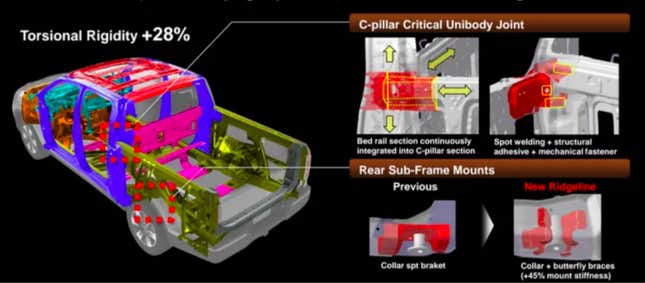
Here’s a look at the old Ridgeline’s rear:
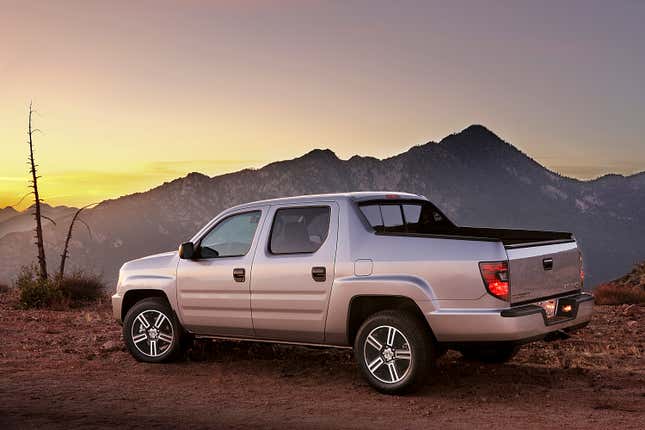
Those sail pillars are pretty strange looking, right? Well, the new generation Ridgeline’s critical unibody joint took the “strange” down a notch:
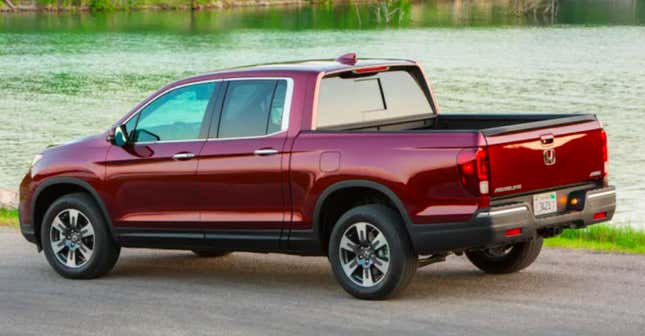
And here’s what I mean by “baffling.” Engineers spent all this time making the Ridgeline look more like a conventional truck from the rear — finding a way to brace the unibody to handle torsional and bending loads without the need for the sail pillars — but then when it came to front-end styling, the truck didn’t look trucklike at all!

Specifically, it looked a lot like a Honda Pilot, which is a crossover SUV:
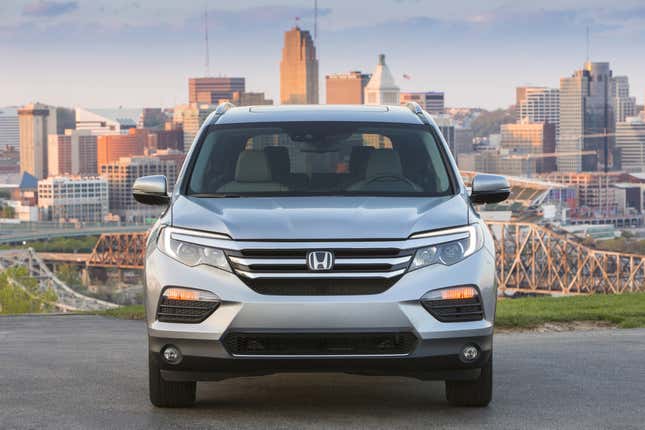
I didn’t get it, and neither did my coworker Andrew Collins, who wrote this in his 2016 review:
Make the face just a little meaner. I get that driving dynamics like elevator music is appealing to some people. But Honda could have done a lot to give this car a little more personality by making the face a little more trucklike. How’s that you ask? “More square.” For more guidance, look at any other pickup truck.
Now Honda has tried to fix this problem, giving the 2021 model a “tough new look.” Here’s what Honda says in its press materials about the new nose:
The 2021 Ridgeline features all-new sheet metal from the front roof pillars forward. Design changes include a new hood sporting a pronounced power bulge and new front fenders that emphasize the squared-off nose and more upright grille, flanked by LED headlights updated for better illumination.
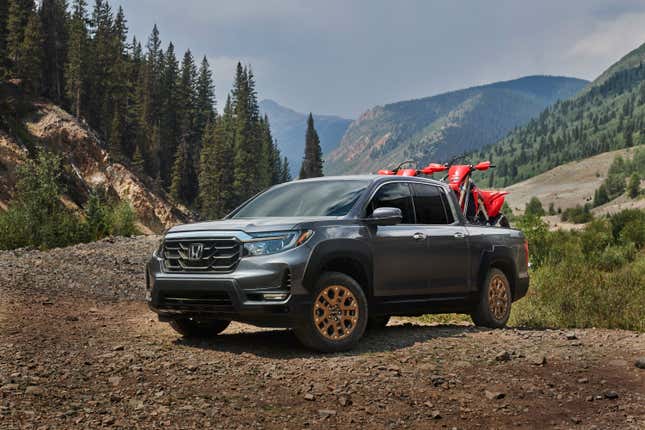
The truck actually looks decent. I dig the big, wide grille that no longer has a two-section horizontal bar in it. I also think the lower fascia looks fairly chunky, almost as if the pickup is wearing some sort of chin guard. I’m also a fan of the fact that the Ridgeline now differentiates itself quite a bit from the Pilot. Here’s the new Ridgeline:

Here’s the Pilot:
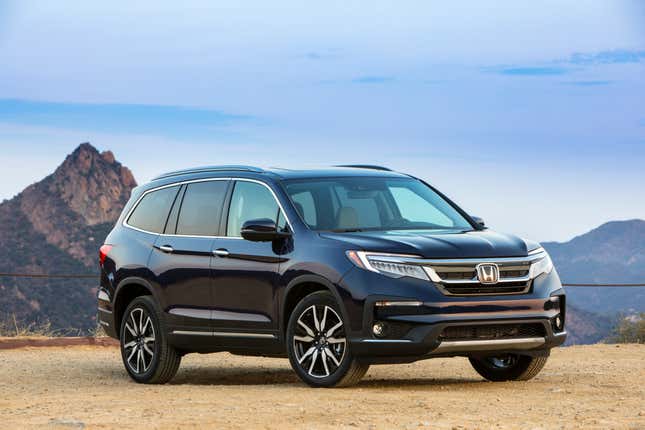
I’m not sold on the lights, but overall, I think the truck looks no less “mean” than, say, the Chevy Colorado (especially 2020 and back models) or Ford Ranger. I also don’t find its styling any more imaginative than the styling on those trucks, which is to say: It’s a bit bland. Clean and not fussy, yes, but bland.
Maybe I’ll change my mind when I see one in person.

That said, the conservative styling actually might work well for a Honda buyer, who may be just as interested in the 2021 Ridgeline’s interior changes — changes that include “new graphics, easier-to-use touchscreen icons and a physical volume knob.”
Since I find the new Ridgeline’s styling to be rather generic, I’ll end this article in the most generic way one can end an article about a new or updated car:
The 2021 Ridgeline hits showrooms early next year.